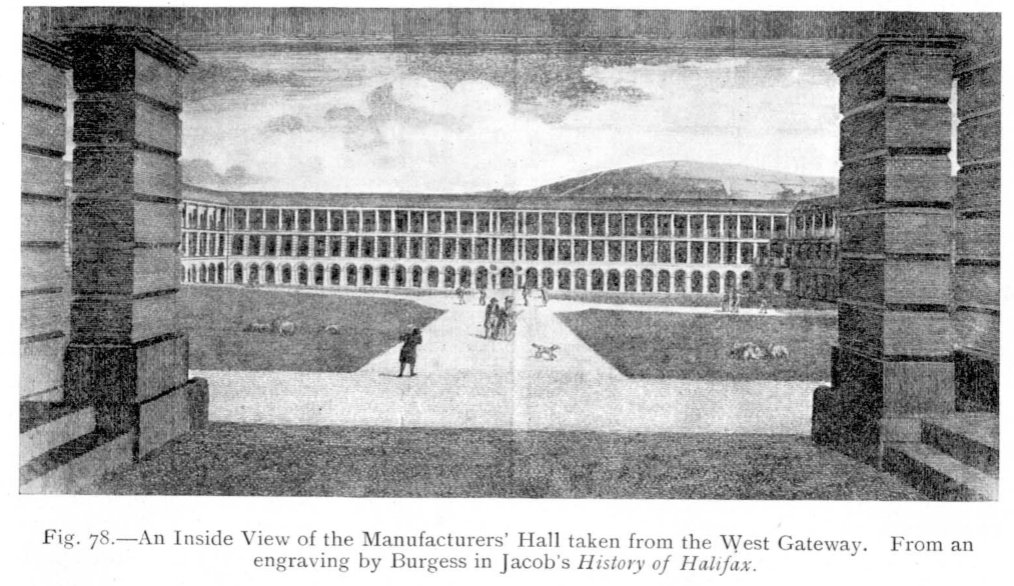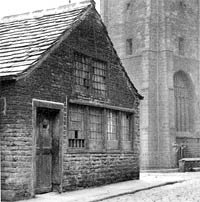🏛️ "The Industrial Dawn of Halifax"


The story of Halifax's wool trade in the medieval period is nothing short of remarkable. By the 15th century, our town had become one of England's most important textile centers.
Picture this scene, if you dare: Thousands of valuable wool pieces hanging out to dry on tenterhooks across the hillsides, stretching as far as the eye could see. These woolens were worth a small fortune - about £3 per piece in medieval currency (that's roughly £2,000 in today's money!). Quite the temptation for any light-fingered folk passing through! The Gibbet Law was usually a good deterrent.
The wool trade brought us:
- Wealth that built many of our finest buildings
- A reputation for quality that spread across Europe
- The development of our famous Halifax Pieces (specific types of cloth)
- The eventual construction of our magnificent Piece Hall

The Moot Hall which was the court of early Halifax.
Key Elements Depicted:
- Trade Activities
- Merchants examining cloth
- Wool weighing and grading
- Trading negotiations
- Transport preparation
2. Working Practices
- Cloth inspection methods
- Quality assessment
- Price negotiations
- Sample displays
3. Historical Accuracy
- Period-correct clothing
- Authentic tools and equipment
- Traditional trading methods
- Accurate architectural details
1700-1800 The Great Transformation

"My dear readers,
adjusts blue-striped scarf thoughtfully
Let us continue our journey through Halifax's remarkable transformation from a medieval wool town to an industrial powerhouse. The story I'm about to share marks the dawn of our industrial age.
The Great Transformation (1700-1800): • Water-powered mills appeared along our valleys • Dean Clough began its rise to prominence • The Piece Hall opened in 1779 - our crown jewel of commerce • New transport links were forged
The Rise of Industry: • Steam power revolutionized production • Mills grew larger and more numerous • Banking houses established themselves • Population grew rapidly
Transport Revolution: • Turnpike roads improved trade routes • Canals connected us to wider markets • The railway's arrival in 1844 changed everything • New streets and houses spread across hillsides
Social Changes: • Workers moved from homes to factories • New schools and churches were built • Markets expanded beyond wool • Banking and commerce flourished
👉 Historical Note: By 1850, Halifax had transformed from a market town into an industrial center, with Dean Clough becoming the world's largest carpet factory.
If you have enjoyed your visit to this website, please spread the word by clicking the 'like' and 'share' buttons below. Thank you


